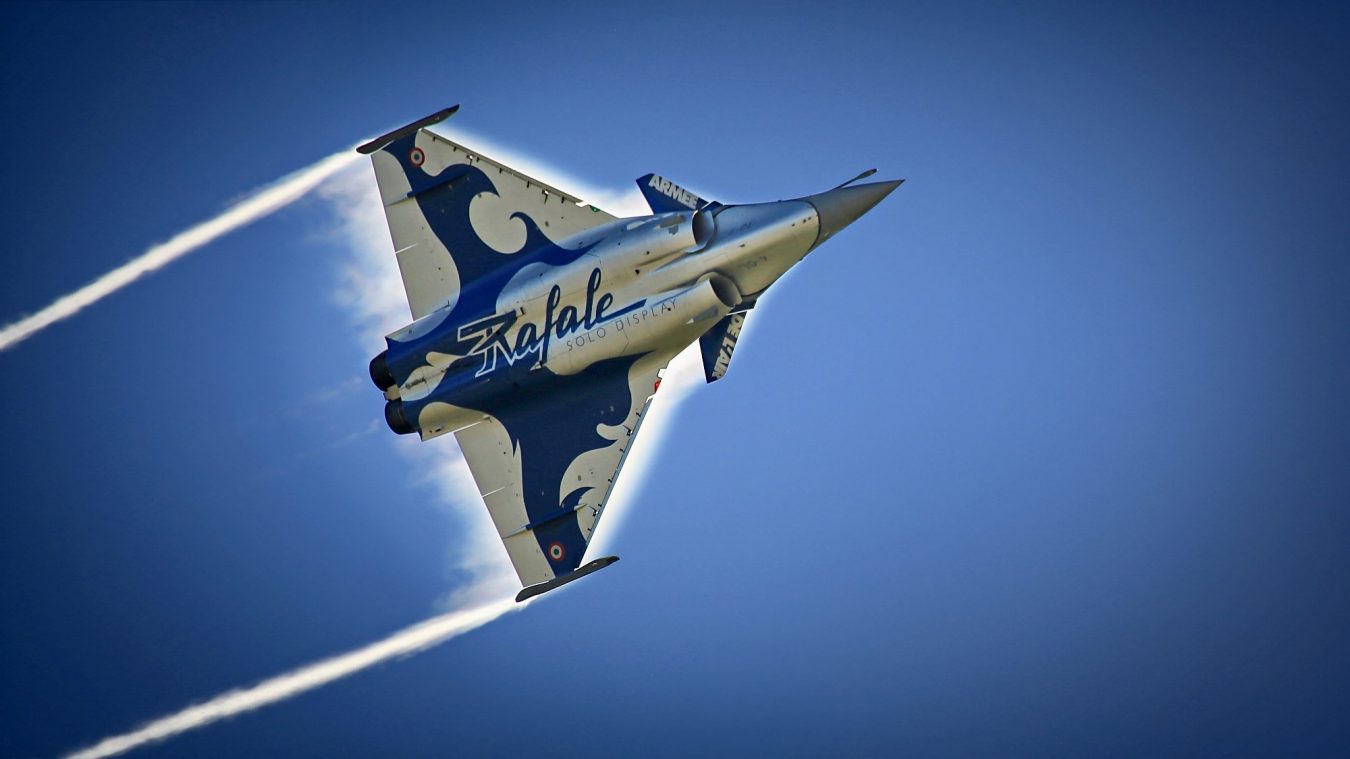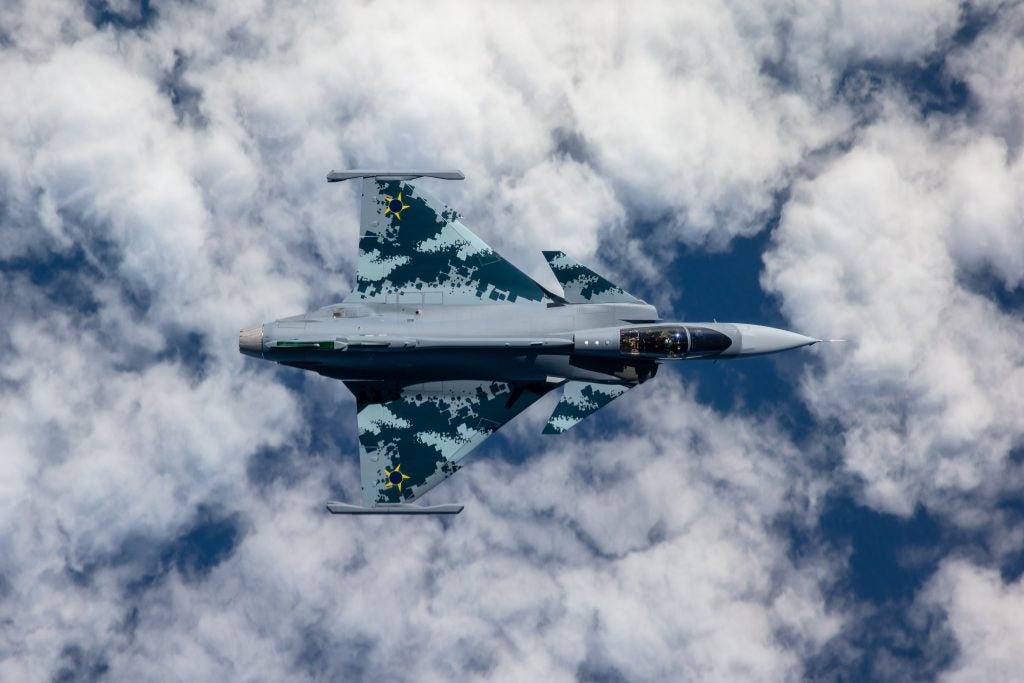The first two serial production Gripen E fighters, called F-39 Gripen by the Brazilian Air Force (FAB), are now in the South American country of Brazil. The Gripens were formally inducted by the Brazilian Air Force (FAB) on April 22.
The two aircraft arrived in the country earlier this month at the port of Navegantes and, on April 6, flew from Navegantes International Airport to the Gripen Flight Test Center (GFTC) at Gavião Peixoto in the State of São Paulo, marking their first flight in the country.
The two serial production jets, with tail numbers FAB4101 and FAB4102, will remain at GFTC until they obtain the military-type certificate from the FAB’s Industrial Fostering and Coordination Institute (IFI) and the Swedish Military Aviation Safety Inspectorate (FLYGI).
Then the two aircraft will be transferred to the Jaguar Squadron, based at the Anápolis Air Base, State of Goiás.
Furthermore, four Gripen jets will be added to the original contract, FAB’s Commander Lieutenant-Brigadier Carlos de Almeida Baptista Jr. announced during the event of induction at the Santa Cruz Air Force Base in Rio de Janeiro.
The first F-39E jet in Flight Test Instrumentation (FTI) configuration arrived in Brazil in September 2020 for flight and ground tests.
How Gripen Stunned The Rafale
Saab had won a contract with Brazil in 2014 for 36 Gripen E/F aircraft after a tough competition that included, the Dassault Rafale, Boeing’s F/A-18 Super Hornet, and the Eurofighter Typhoon.
The contract worth US$ 4.02 billion required Saab to provide 28 F-39E single-seaters and 8 F-39F twin seaters for Brazil’s F-X2 Fighter Modernization Program.
Saab was able to beat the competition from France’s Dassault and US aviation giant Boeing because it offered the Gripen at almost half the price of either the Dassault’s Rafale or Boeing’s F/A-18.
As opposed to $4.02 billion for the Saab Gripen, Brazil would reportedly have to spend about $8 billion for the Dassault’s Rafale and $7.5 billion for the Boeing’s F/A-18. Also, the cost per hour per flight for the Gripen is said to be $4,000, as compared to the Rafale’s $14,000 and F/A-18’s $10-14,000.

A spokeswoman for Dassault had expressed regret about the decision saying – “The Gripen is a lighter, single-engine aircraft that does not match the Rafale in terms of performance and therefore does not carry the same price tag.”
While the Dassault’s spokeswoman may have been correct but experts had suggested that the outstanding performance and capabilities of the Rafale were not necessarily the requirement for the FAB, which could help explain Brazil’s decision to go with Gripen which was much more economical.
“If you are not a country that wants to bomb areas with really strong air defenses on day one of a war, you have to take the Gripen very seriously,” said Sash Tusa, an independent defense analyst. “If you want to defend your nation against most things, show that you have sovereignty over your air and sea, then your best bet is Gripen.”
Saab vs Dassault
Moreover, Saab had reportedly offered a larger level of technology transfer for the fighter, as compared to Dassault and Boeing which was an even more important factor that helped it clinch the deal.
Brazil had insisted on technology transfers so that the planes can be assembled locally and give a boost to the domestic defense industry and therefore how much of the fighters’ technology the bidder is able and willing to share and how much of it will be built within its borders was a decisive factor in awarding the contract.
Brazil’s Air Force Commander at the time, Lt. Brigadier Juniti Saito while announcing the choice of Saab Gripen had said that several Brazilian companies would contribute to the project, and upon its completion, Brazil would have full access to the technology of the aircraft.
In 2018, Saab unveiled its new aerostructures facility in Brazil near Sao Paulo, known as the Saab Aeronáutica Montagens with plans to incorporate up to 200 employees by 2024.
By 2020, the new manufacturing plant had employed more than 70 workers and begun producing the tail cone and front fuselage for the single-seat Gripen E version of the jet with plans to eventually make the brakes, rear fuselage, wing box, and front fuselage for the two-seater “F” model.
Those structures would then undergo final assembly at Embraer’s nearby plant in Sao Paulo and Saab’s main Gripen production hub in Linköping, Sweden.

That said, there are plans underway to buy more Gripens to double the FAB’s current fleet of 36 Gripen aircraft.
In February, Brazil’s Air Force Chief, Lieutenant-Brigadier Baptista Jr., said in an interview that talks were underway with Saab to buy an additional 30 Gripen fighter jets, bringing the total to 66 fighter jets.
“Our capacity-based plans point to a total of 66 aircraft. How to get to that number is something that we are discussing, it is at an early stage. There is an intention,” Baptista Jr. said.
Meanwhile, two additional serial production F-39Es are expected to be shipped to Brazil later this year.
- Written by Tanmay Kadam/EurAsian Times Desk
- Contact the author at etdesk@eurasiantimes.com
- Follow EurAsian Times on Google News




